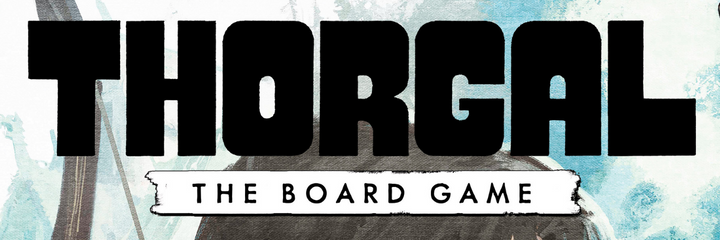I am not a big fan of the Witcher series on Netflix, but the fight scene in the first episode of the first season, the famous Geralt vs Renfri’s band, is one of the best fights in cinema history.
In Thorgal’s dev team, there was no dispute on this matter. We are all united in not being fans of fights that last long minutes, both in classic RPG games and even in the best board games, such as Sleeping Gods or Descent, where the rules of combat drag on and turn the whole experience into torture.
One round, one roll. Fighting is not cutting down a tree, it is not hacking away with an ax at a thick trunk and removing hit points from it blow by blow. It is a jump, a strike, sometimes a parry, sometimes a retreat, but then a strike again.
In solo play, players can enjoy complicated systems and have fun in tactical fights that last many rounds, but here, when three or four players sit at the table, no one wants to watch you fight a pack of wolves for 10 minutes.
On the first note, the first assumption about the fight was: One roll.
Why dice, why roll? Couldn’t the fight be based on cards like in Gloomhaven or Kemet? Couldn’t we come up with something original? Use the bag-building mechanism to learn new blows and draw a specific attack token during the fight? Couldn’t we design a duel board with a simple worker placement mechanism representing specific types of attacks? Players would place their action pawns on specific types of attacks and realize the effects of those spaces…
It was possible. Of course, it was. Unique combat rules in games are barely touched. It is a deposit that hides dozens of ideas yet to be fulfilled and considered by the creators.
So why just roll the dice?
Because we love RPG games. Because we grew up on D&D or Warhammer. Because there is nothing more classic than rolling dice for an attack.

In Thorgal, each opponent is represented by a card. The card has a layout of spaces on it. The spaces have spots that must be hit to defeat them. There are also spots to avoid. And some spots that will provide us with additional bonuses such as Experience Points.
How does the fight look?
You draw an opponent card. You build a dice pool. It depends on what kind of hero you play, how you developed them during the game (details in future updates), what weapon and special equipment you have (details in future updates), and all other additional bonuses.
You take this dice pool and roll. Each die will indicate which token you can draw. You lay the tokens on the opponent’s card.
Lay them out to cover the fields that will allow you to defeat them.
Lay them out, being careful not to cover the fields indicating that you are wounded.
Lay them out to gain some Experience Points.
One roll. Several tokens. More than a dozen tactical solutions. Will you attack to defeat them, even though you will be wounded? Will you attack accurately, knowing you can’t arrange the tokens to gain experience?
One roll. A lot of tactics.
Author: Ignacy Trzewiczek
Find out more about Thorgal here: https://gamefound.com/projects/portalgames/thorgal-the-board-game
 Polski
Polski English
English Deutsch
Deutsch




